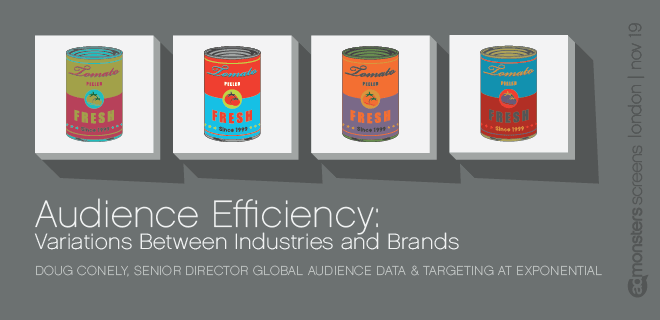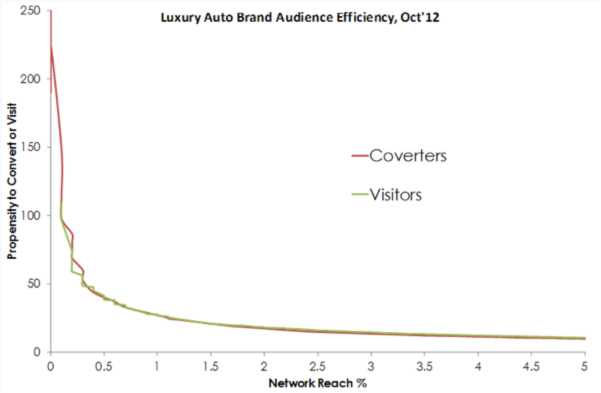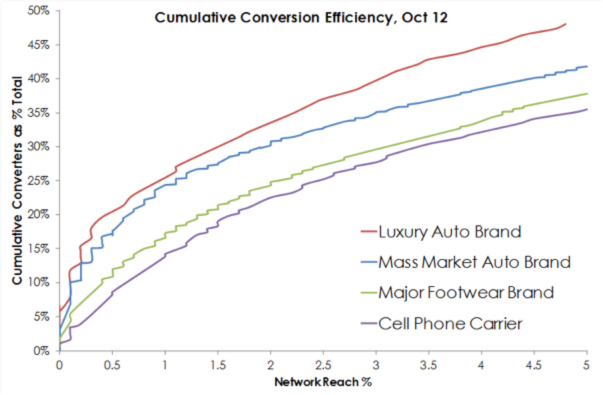
In previous posts here on AdMonsters I introduced the notion of “audience efficiency’ in targeting and shared some key findings about third-party data from more than 200 client studies. But what does it mean directly for advertisers and their first-party data? Does efficiency vary between industries and between advertisers in the same industry? Yes and here’s how.
A Reminder on Audience Efficiency
We can visualise audience efficiency as a trade-off between how well an audience segment fits a client’s target audience (lift) and the reach. Mathematically, there is no possible selection of audiences that provides the same lift for a given reach or vice versa.
1. Advertisers with mass-market products have lower efficiency

First, we compared converter audience efficiency between a luxury auto brand and a mass-market auto brand, where conversions are dealer locator page visits, brochure requests or test drive bookings. We found that the luxury brand is more efficient. The less familiar chart on the right shows that far more converters are identified for the luxury brand at 5% reach than the mass market brand.
Intuitively, this makes sense. There’s a reason why we can all visualise the type of person that buys certain luxury German auto brands compared to some US, Japanese or Korean brand models with broader appeal. The characteristics of the mass market buyer are harder to define and therefore less efficient. Not by much, but enough to say that luxury brands have the edge in terms of finding their customers efficiently (though there are fewer of them).
2. Site visit segments are less efficient than converters
Second, for the same luxury auto brand, we compare the converter audience efficiency to the visitor audience efficiency. Do visitors provide an audience as efficiently as converters? At first glance this does seem to be the case.

We also know that the profile of the visitors is similar to that of converters. This is one of the reasons why retargeting works so well. However, finding converters from an audience built from visitors is less efficient. Again, this isn’t surprising as the visitor audience includes the dreamers and early stage investigators to dilute the signal from those actively in the consideration phase.
3. Efficiency will vary between industries
Finally, we compared converter audience efficiency for the luxury and mass market autos brands as well as a cell phone carrier (monthly contract conversions) and a major footwear brand (online conversions through their own online store).

There are two major conclusions for advertisers: first, not all products, advertisers or industries are equal. Some are inherently more efficient than others. Expectations need to be managed accordingly, particularly as audience models become more widespread.
Second, visitors are a good proxy to converters but not as efficient. Advertisers with online paths to conversion at scale have an advantage in audience efficiency.
 |
Macro-level changes are coming, and you can sieze the opportunities that follow at OPS NY. This event will bring together digital advertising leaders and ops professionals to discuss a rapidly evolving landscape and develop strategies for monetization. Register today for OPS NY which will be held Oct. 4, 2012. |